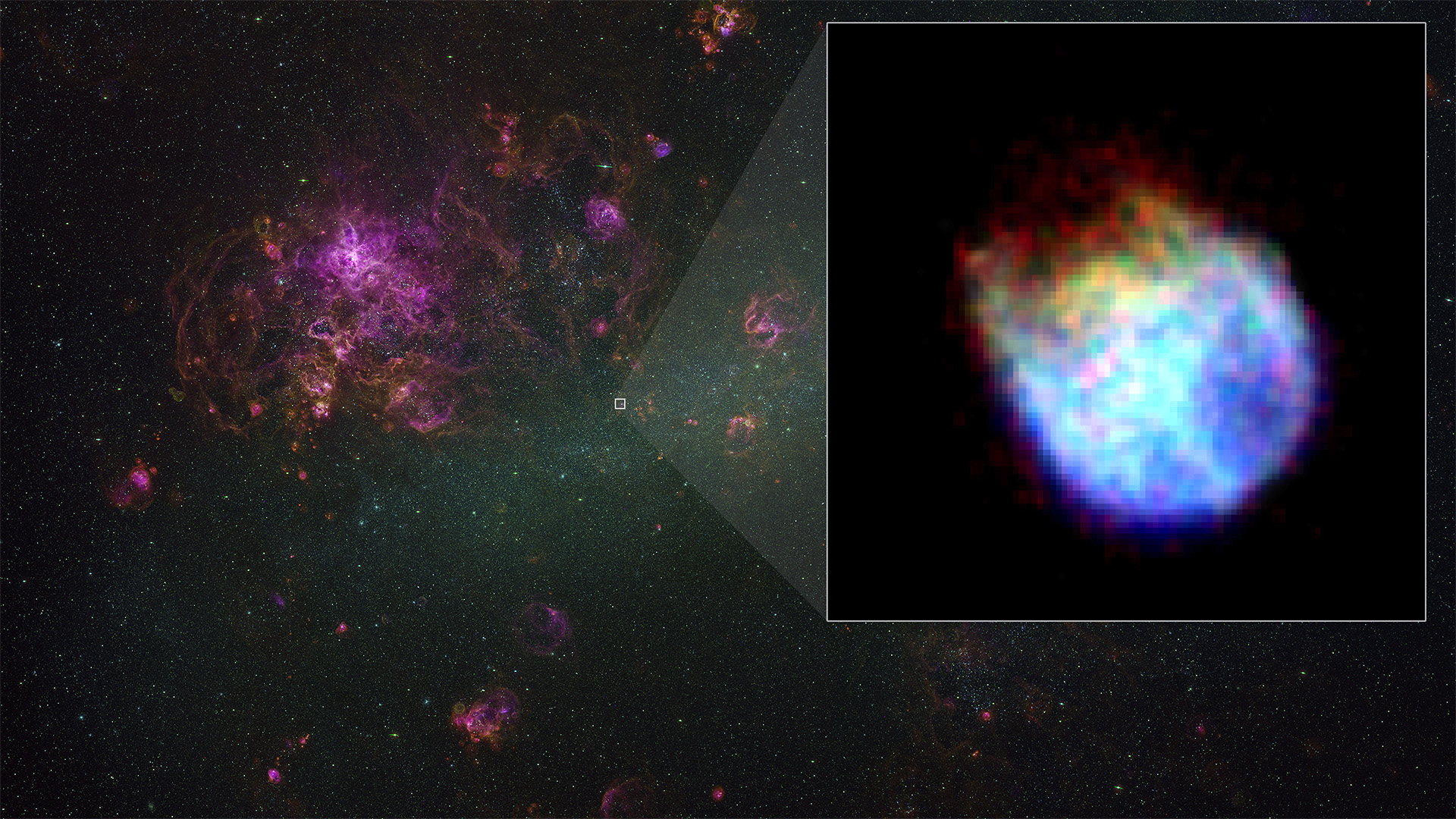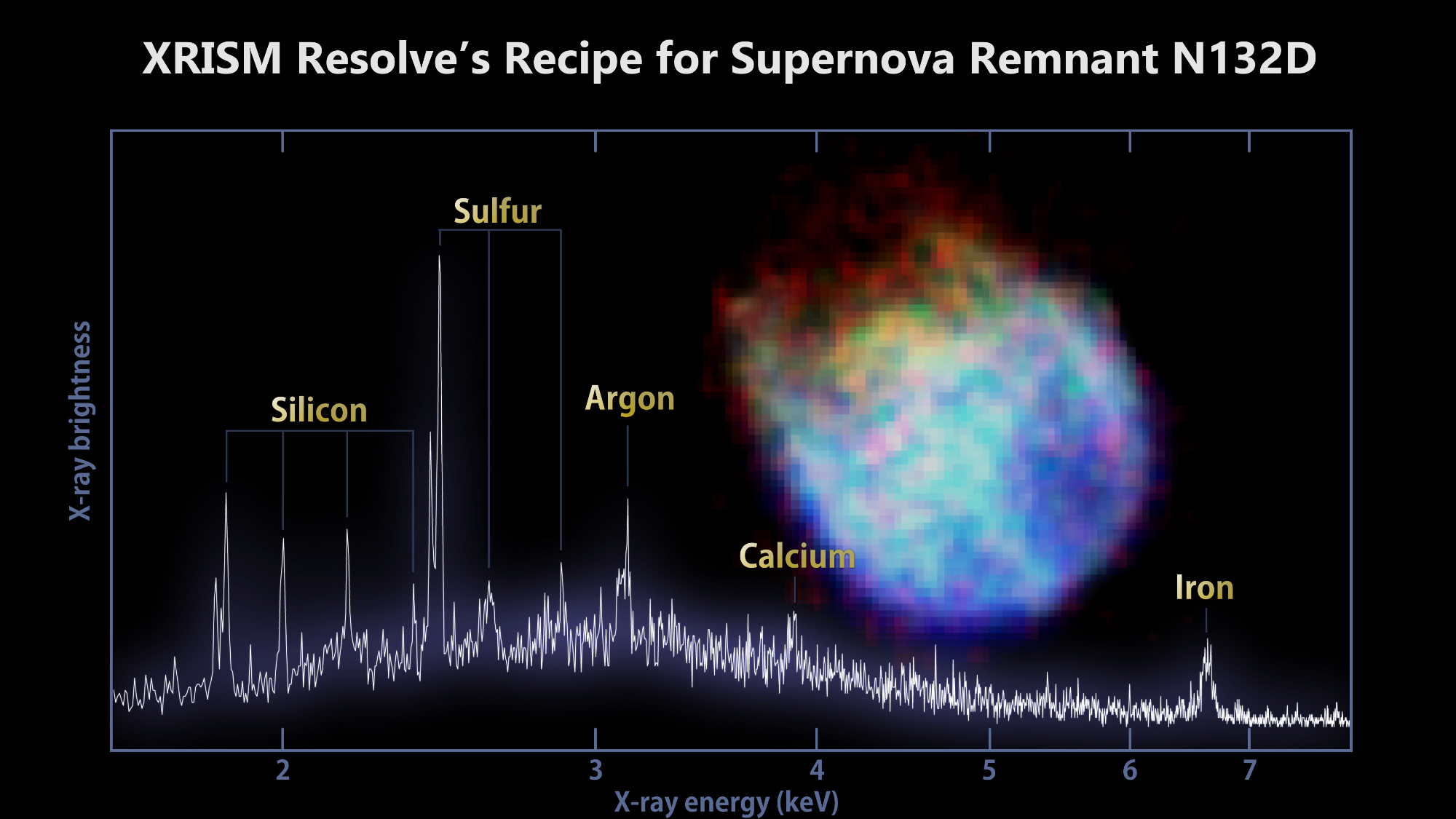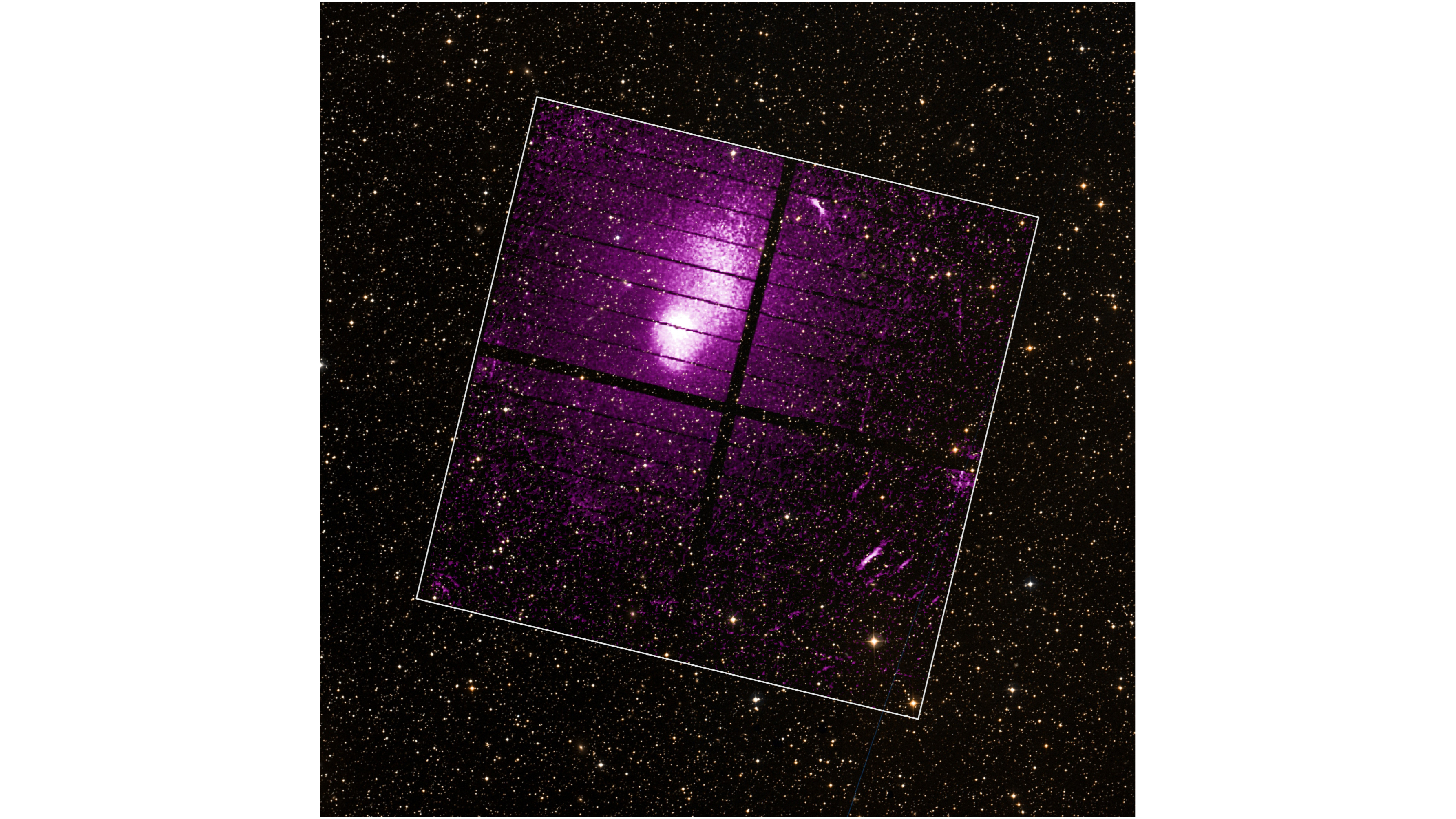JAXA, NASA reveal 1st images from XRISM X-ray space telescope
These test images are just a taste of what's to come when XRISM starts science operations later this year.

The X-ray Imaging and Spectroscopy Mission (XRISM) — a space telescope led by the Japan Aerospace Exploration Agency, in collaboration with NASA with additional contributions from the European Space Agency — has produced its first test images: one of supernova remnant N123D and one of galaxy cluster Abell 2319.
Launched in September 2023, on the same rocket as Japan's SLIM moon lander, XRISM (pronounced "crism") will study some of the most violent and extreme phenomena in the universe, from intense outbursts from black holes to super-hot gas clouds surrounding galaxy clusters, to learn more about the evolution of the cosmos. It's designed to detect powerful X-rays measuring up to 12,000 electron volts; visible light, by comparison, has energies of just 2 to 3 electron volts.
In one test image, XRISM's Resolve instrument — a microcalorimeter spectrometer — homed in on N123D, one of the brightest X-ray sources in the Large Magellanic Cloud, a satellite galaxy of the Milky Way located some 160,000 light-years from Earth. The spectrum revealed silicon, sulfur, calcium, argon, and iron in the supernova remnant.
Related: Supernova photos: Great images of star explosions

"These elements were forged in the original star and then blasted away when it exploded as a supernova," Brian Williams, NASA’s XRISM project scientist, said in a statement. That cataclysmic event is thought to have occurred some 3,000 years ago (from our perspective here on Earth).
"Resolve will allow us to see the shapes of these lines in a way never possible before, letting us determine not only the abundances of the various elements present, but also their temperatures, densities and directions of motion at unprecedented levels of precision," Williams said. "From there, we can piece together information about the original star and the explosion."

In another test image, XRISM's Xtend imager captured an X-ray image of Abell 2319, the fifth-brightest galaxy cluster in the sky, located about 770 million light-years away. At 3 million light-years across, Abell 2319 demonstrates Xtend's exceptionally wide field of view.
Get the Space.com Newsletter
Breaking space news, the latest updates on rocket launches, skywatching events and more!
"XRISM will provide the international science community with a new glimpse of the hidden X-ray sky," Richard Kelley, the U.S. principal investigator for XRISM, said in a statement. "We’ll not only see X-ray images of these sources, but also study their compositions, motions, and physical states."
Join our Space Forums to keep talking space on the latest missions, night sky and more! And if you have a news tip, correction or comment, let us know at: community@space.com.

Space.com contributing writer Stefanie Waldek is a self-taught space nerd and aviation geek who is passionate about all things spaceflight and astronomy. With a background in travel and design journalism, as well as a Bachelor of Arts degree from New York University, she specializes in the budding space tourism industry and Earth-based astrotourism. In her free time, you can find her watching rocket launches or looking up at the stars, wondering what is out there. Learn more about her work at www.stefaniewaldek.com.
